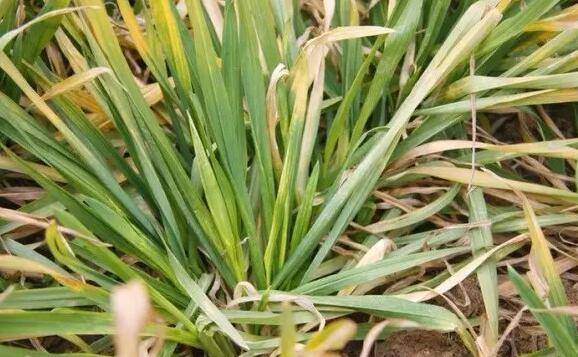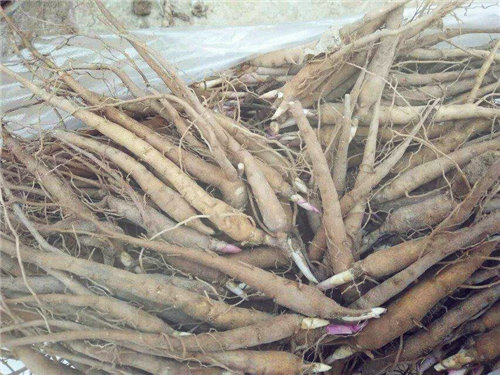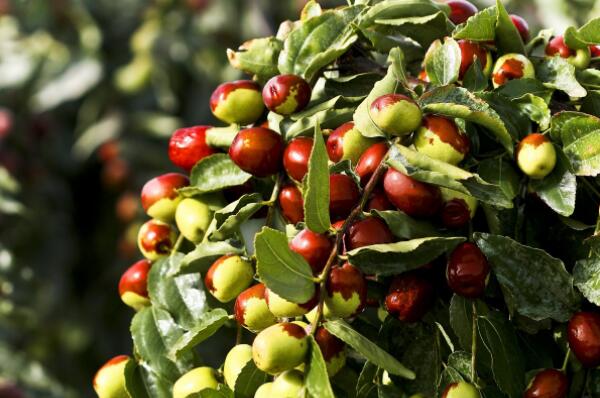What medicine does wheat yellow leaf disease hit? What is the reason for yellowing? How to prevent and cure?
Wheat leaves are yellowed to varying degrees after the beginning of spring, commonly known as wheat yellow leaf disease. The symptoms usually begin at the end of February and the beginning of March. What kind of medicine do you take for wheat yellow leaf disease? What is the reason for yellowing? How to prevent and cure?
Wheat yellow mosaic disease is a kind of soil-borne viral disease, namely wheat yellow mosaic virus disease, also known as spindle streak mosaic disease. The disease is mainly spread by diseased soil, diseased root residue, diseased field flow, and can also be spread by juice friction inoculation. The natural transmission medium of wheat yellow mosaic virus is cereal polymyxomycetes. The disease was infected but not obvious in the autumn seedling stage, and the disease began to occur in the green stage of wheat seedlings in the following year. The suitable temperature for the development of the disease was 5: 15 ℃, and the disease stopped when the soil temperature was above 20 ℃.
After the wheat is infected, the period of turning green, jointing, heading and maturing is postponed, the plant is dwarfed, the spike rate is low, the spike is small, and the grain is shrunken, which can generally reduce the yield by 10% to 30%, and the heavy ones can reduce the yield by more than 50% or even no harvest. The infection rate of this disease is very fast, and it takes only 3-4 days from sporadic onset to mass death. Therefore, after the cold wave, the wheat is in the "weak" stage, and the immune level is poor, and after the gradual heating up, the bacteria hidden in the soil begin to invade at the right temperature. If the onset temperature lasts too long, the incidence of wheat disease will greatly increase. And there will be a huge risk of yield reduction.

There are many reasons for the occurrence of wheat yellow leaf disease, mainly in the following ways:
1. Drought and lack of soil moisture
Due to the lack of soil moisture and sowing, the water absorbed by wheat roots from the soil is difficult to compensate for consumption, and the growth and development of wheat leaves turn yellow and die in serious cases. In the field, the yellowing of the whole wheat field is consistent, the birth of tillers is slow, the growth is slow or stagnant, the new leaves are short, the roots are small and thin, and the management can be combined with watering 7-8 kg urea per mu.
two。 Soil partial acid
At present, excessive chemical fertilizer is widely used in farmland, which leads to the acidity of the soil. The acidity of the soil causes the root system to blacken, which reduces its ability to absorb water and fertilizer, and then leads to the yellowing of wheat seedlings. 50-70 kg of quicklime or 50-100 kg of plant ash can be applied per mu to neutralize soil acidity.
3. Incomplete crushing of straw or insufficient plough layer of straw returning to the field
Returning straw to the field can improve the soil and improve the soil fertility. When returning to the field, the plough layer is less than 20 cm, and the straw returned to the field is not thoroughly crushed, so that the root system of wheat is tied on the loose straw after emergence, and the root system is suspended, so it is difficult to absorb nutrients from the soil. Cause the wheat seedlings to turn yellow. Watering can be carried out, the soil can be stabilized, and nitrogen fertilizer can be applied to accelerate straw decay, and at the same time, the seedling roots can be fully rooted. At the same time, soil preparation advocates thoroughly crushing and deepening ploughing, which should be ploughed deeply every 3 years, with a depth of up to 25 cm.
4. Lack of fertilizer
Wheat deficiency of nitrogen, phosphorus, potassium, calcium, iron, magnesium and other elements can lead to the emergence of yellow leaves in wheat seedling stage. The more common ones are nitrogen deficiency and phosphorus deficiency. When wheat yellowed due to nitrogen deficiency, the plants were short and weak, the tillers were few and weak, and the seedling leaves yellowed. It can be applied about 5 kg urea per mu in the returning green period, and 12-15 kg urea per mu in the jointing stage. When wheat yellowed due to phosphorus deficiency, there were few secondary roots, few tillers, dark green leaves and yellow leaf tips. At the same time, the yellowing of phosphorus deficiency in wheat will also lead to the decrease of small grains per spike and the decrease of 1000-grain weight, which will seriously affect the yield. 10 kg of diammonium or 45-50 kg of superphosphate can be applied per mu. After the diagnosis of element deficiency is accurate, it can be supplemented by soil application or foliar spraying according to the principle of what is missing.
5. The sowing density of wheat is too high
The high sowing density of wheat affects the photosynthesis of wheat, and the competition for water and fertilizer is fierce, which leads to yellow weak seedlings. Therefore, the seeds should be sown appropriately according to the season and temperature.
6. Sustained low temperature and frost injury
Continuous low temperature, less light time, the overall situation of wheat seedlings is weak, affected by low temperature freezing injury showed yellow leaf symptoms. The management should be strengthened and foliar fertilizer should be sprayed when the cold spell comes.
7. Causes of diseases and insect pests
Underground pests, wheat aphids, red spiders and other pests can cause the yellowing of wheat seedlings. Aphids can be controlled with 1000-1500 times of imidacloprid, red spiders with 1.8% avermectin 3000 times, and underground pests can be sprayed with 48% chlorpyrifos EC 1000-1500 times or 40% phoxim EC 1000 times.
There are three kinds of wheat diseases: sheath blight, total erosion and root rot. They are all fungal diseases, and they can show yellow leaves at the initial stage, but the location and shape of the disease spot are different. Sheath blight mainly harms leaf sheath; total erosion mainly harms stem base and root; root rot only occurs in root. They are all soil-borne diseases. Tebuconazole and propiconazole can treat these three diseases at the same time.
8. Drug damage
The most common are yellow wheat seedlings caused by herbicides. Regulators, foliar fertilizers or detoxification drugs should be sprayed in time to stimulate the growth of wheat seedlings and reduce drug damage. It can also be combined with primary irrigation and increase the application of tiller fertilizer, which can also play a role in alleviating drug damage.
9. Adverse climatic effects
Yellow leaves are caused by meteorological reasons such as low temperature, strong wind and frost. The occurrence time is often closely related to the weather change, the range is large, and the performance of the whole field is more consistent. When the symptoms are mild, there is no need for prevention and treatment, but in severe cases, quick-acting fertilizers can be applied to promote growth.
Time: 2019-04-10 Click:
- Prev

How much is the perennial herbaceous vine Paeonia lactiflora seedlings? How to grow high yield?
Radix Paeoniae Alba is a common perennial herb or subshrub plant in China. It has a long history of cultivation in China. It is widely used as medicine because of its antibacterial, anti-inflammatory, blood sugar regulation and other functions. At present, it has been planted in many areas.
- Next

Where is the suitable place for planting jujube trees? When will it be planted? What kind of medicine do you take when you have a worm?
Jujube is a small deciduous tree, sparse shrub, up to more than 10 meters high; brown or grayish brown bark; flowering from May to July and fruiting from August to September. So where is it suitable for planting? When will it be planted? What kind of medicine do you take when you have a worm? Where is the jujube suitable for planting? Warm temperate positive species of jujube. Xi Guang
Related
- Fuxing push coffee new agricultural production and marketing class: lack of small-scale processing plants
- Jujube rice field leisure farm deep ploughing Yilan for five years to create a space for organic food and play
- Nongyu Farm-A trial of organic papaya for brave women with advanced technology
- Four points for attention in the prevention and control of diseases and insect pests of edible fungi
- How to add nutrient solution to Edible Fungi
- Is there any good way to control edible fungus mites?
- Open Inoculation Technology of Edible Fungi
- Is there any clever way to use fertilizer for edible fungus in winter?
- What agents are used to kill the pathogens of edible fungi in the mushroom shed?
- Rapid drying of Edible Fungi

